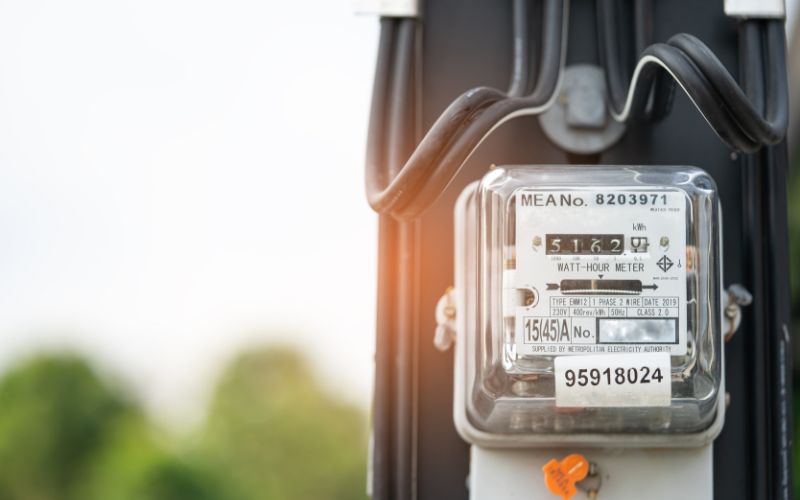Solar technology has significantly advanced, enabling smaller panels to produce energy efficiently within hours. Improvements occur annually.
One option for storing this excess energy is to connect your solar power system to the local power grid. But how does that work exactly?
It all comes down to something called “net metering.” Let me summarize it in this short blog post.

What is Net Metering?
With net metering, people with solar panels can get credits on their electricity bills. When your solar panels produce more electricity than your home consumes, this excess power is returned to the grid, earning you credits.
On cloudy days, however, your panels might not generate enough electricity, necessitating reliance on the grid.
In Alberta, the monthly credit you earn is calculated by multiplying the energy (in kWh) your panels export to the grid by the prevailing generation rate (in $/kWh).
It’s crucial to keep in mind that your final bill is based on how much grid electricity you use, not how much power your panels generate.
In short, net metering is a system in the solar industry that allows homeowners to offset their monthly bills based on the electricity they feed back to the grid.
So how does this work?
How Net Metering Works
Net metering is an agreement between electricity providers and consumers that results in lower monthly rates.
This agreement applies to any renewable energy source, like solar panels, as long as they are on-grid systems.
The central part of this agreement is the net meter, which keeps track of the energy flow between the consumer and the grid.
After producing more energy than they use, users send excess power to the grid for credit to offset future electricity bills.
Each region, whether a province, territory, or state, has its unique net metering program and pricing structure.
These policies can be implemented due to legislation, regulatory decisions, or voluntary utility initiatives.
To understand the specifics of your area, contact your local utility provider or an expert renewable energy installer—https://gridworksenergy.com/alberta/edmonton/
Five Benefits of Net Metering
- SAFETY
Net metering systems, once installed, are user-friendly and adhere to safety rules. They efficiently value surplus energy without additional installations or costly storage solutions.
- STABILITY
With Stability 8, you can mitigate power fluctuations and outages. Homeowners and businesses help alleviate the strain by contributing to the grid, particularly during high-demand periods.
- SUSTAINABILITY
Solar installers promote environmental conservation and resource preservation by simply adopting net metering. Additionally, net metering provides financial savings by accurately crediting surplus energy contributions.
- EFFICIENCY
One solar-powered home can power several others through net metering. This system utilizes a bi-directional meter to track both energy consumption and generation.
- COMMUNITY IMPACT
Communities equipped with solar systems can move towards self-sufficiency. Homes with net metering tend to be more energy-aware, reducing energy wastage.
Conclusion
Embracing solar technologies and net metering is essential for a sustainable future and environmental protection.
Net metering ensures community safety, stability, and efficiency, fostering sustainable progress.
With yearly advancements in solar technology, households can increasingly benefit the environment and their wallets.
Now is the ideal time to transition to solar energy and leverage net metering.
FAQs:
How Do I Start with Net Metering?
While this post provided a general overview, the exact process might vary based on location and energy provider. Contact your local utility or an expert renewable energy installer to guide you.
Can I Opt-Out of Net Metering Once I’ve Started?
Most regions allow users to opt out, but the process and any associated costs can vary. Refer to your agreement or consult your energy provider to understand the terms and conditions.